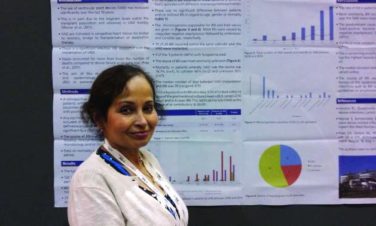FROM THE NEW ENGLAND JOURNAL OF MEDICINE
The inactivated influenza vaccine is more effective than the quadrivalent live attenuated vaccine, according to a study conducted by the Influenza Vaccine Effectiveness Network.
After poor live vaccine performance in young children during the 2013-2014 flu season, the A(H1N1)pdm09 strain was changed. In response to earlier reports that the A(H1N1)pdm09 vaccine strain had poor thermostability, it was updated to A/Bolivia/559/2013 (an A/California/7/2009-like virus) for the 2015-2016 influenza season changed to include Unfortunately, the changes did not increase the vaccine’s immunogenicity. At study sites in Michigan, Pennsylvania, Texas, Washington, and Wisconsin, 6,879 patients aged 6 month or older who presented for acute respiratory illness with a cough of 7 or fewer days were tested for influenza. Of those, 1,309 (19%) tested positive. Vaccination histories were taken from parent interviews and electronic health records.
Vaccine effectiveness was estimated to be 48% in all age groups and for each virus subtype or lineage (95% confidence interval, 41-55; P less than .001); however, significant effectiveness was observed for only the inactivated influenza vaccine (P less than .001), compared with the quadrivalent live attenuated vaccine (P = .86), according to Michael L. Jackson, PhD , associate investigator at the Kaiser Permanente Washington Health Research Institute, and his coauthors. The 136 children who received the live vaccine were significantly more likely to contract influenza than the 682 children who received the inactivated vaccine (odds ratio, 2.7; 95% CI, 1.6-4.6; P less than .001), without any significant benefit over those who received no vaccine (live vaccine effectiveness, 5%; 95% CI, –47 to 39; P = .8). Looking specifically at children aged 2-17 years old, the risk of influenza was not significantly lower among those who received the quadrivalent live attenuated influenza vaccine than among those who received no vaccine; the inactivated vaccine had a marked benefit over no vaccine (vaccine effectiveness, 60%; 95% CI, 47-70; P less than .001).
“Although the quadrivalent live attenuated vaccine remains licensed in the United States, the [Advisory Committee on Immunization Practices] did not recommend this vaccine for the 2016-2017 influenza season,” the investigators wrote.
Partial funding for the research came from the Centers for Disease Control and Prevention and the National Institutes of Health. Dr. Jackson reported receiving a grant from Medimmune.
Read more in the New England Journal of Medicine (2017;377:534-43)




